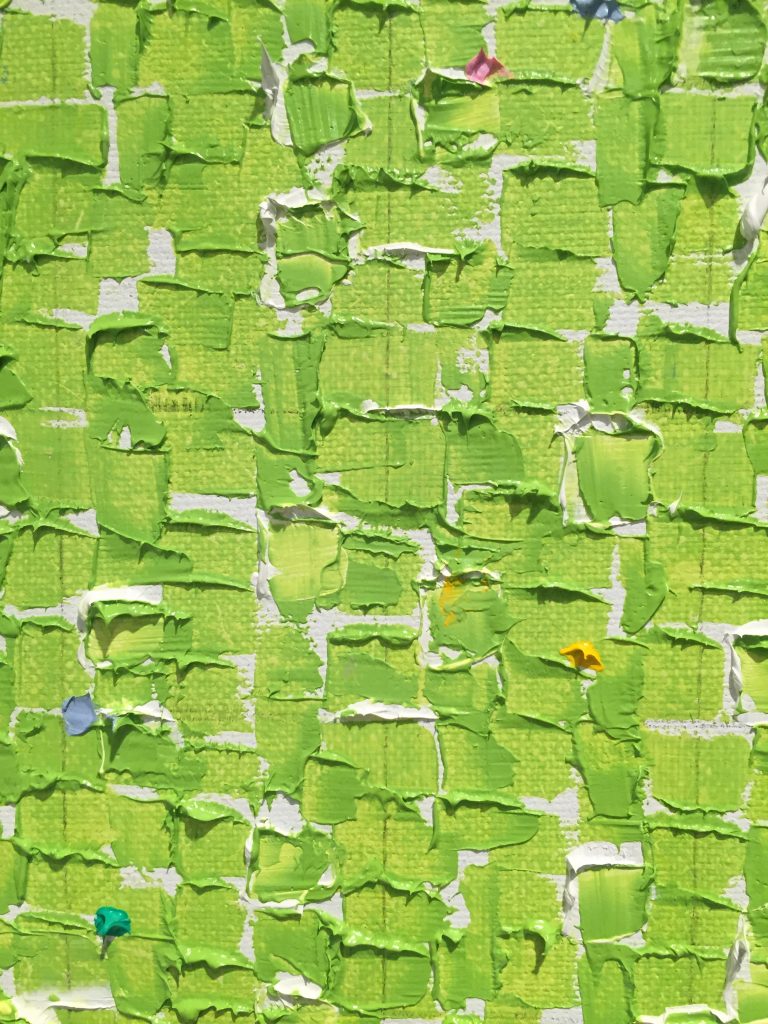Young il Ahn

Water PPWG 16, detail, oil on canvas, Young-il Ahn, Korean
I spent Thursday afternoon at the L.A. Art Show, which concluded tonight. While much of it was of little or no interest, there were pockets of remarkable work, and I was gratified that my flight home got delayed by rain–denizens of Southern California apparently get premonitions of the world’s end when a steady rain begins to fall. Traffic slows dramatically. Jets get delayed. And all in reaction to a moderately steady rainfall. It’s pretty funny. (If you want a serious brush with death by weather, come to Rochester NY, and see what it takes to shut down the Thruway in January.) So I moved my flights a day forward, to Friday, giving me a leisurely visit to this big art fair which drew 70,000 people in 2016.
Toward the end of my meandering through the Convention Center, I came across a booth staffed by Baik Art, a gallery on La Cienega. Though the monochromatic surfaces looked at first like something I’d quickly forget, I turned a corner and saw a couple more of Young-il Ahn’s canvases and paused long enough to be drawn into them. I’d never heard of this painter before. The intelligent and perceptive young woman staffing the booth approached to tell me about him. He was born in Korea, moved to L.A. since the 60s, and now in his 70s, he’s been a painter for 50 years. He’s spent decades trying to capture the soul of the Pacific Ocean in these meditative images. I told her how much they impressed me.
“But don’t you wonder why?” I asked. “It’s a mystery, isn’t it, what makes such simple, repetitive images so good?”
She knew I wasn’t really asking. I would find it impossible to specify anything in the painter’s facture that struck me as exceptionally skillful, based on the standards I’d apply to most paintings. They were meticulously executed, which is obvious in the detail above, but trying to explain why the care he took with his mark-making has such a powerful impact on the viewer is like trying to pin down why the simplicities of Agnes Martin or Frederick Hammersley are so compelling and irresistible. You sense they adhere to some obsessive, personal imperative, so that every detail has been subjected to the most intense scrutiny and effort–and the energy of this kind of attention radiates from the surface. One feels the need to resort to come kind of corollary for Hindu distinctions between gross and subtle bodies–an invisible aura?–a whole metaphysics of painting that few people would find persuasive, including me. But my sense was that a quality, an X, akin to that kind of Vedantic distinction operates in all painting, so that something is conveyed through visual means by a painting as a whole, but is nowhere identifiable with any particular tangible qualities you can isolate and identify. You can easily spot the surface excellence in most paintings, but work like this conveys far more than pleasure and beauty and craftsmanship–and yet how to describe what that extra something is and how this transmission takes place? It’s nowhere and everywhere in the painting.
Comments are currently closed.